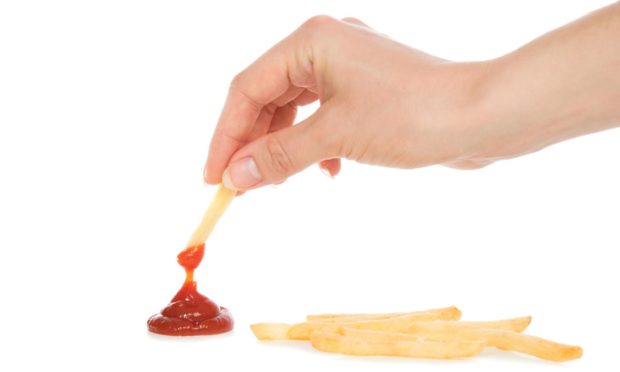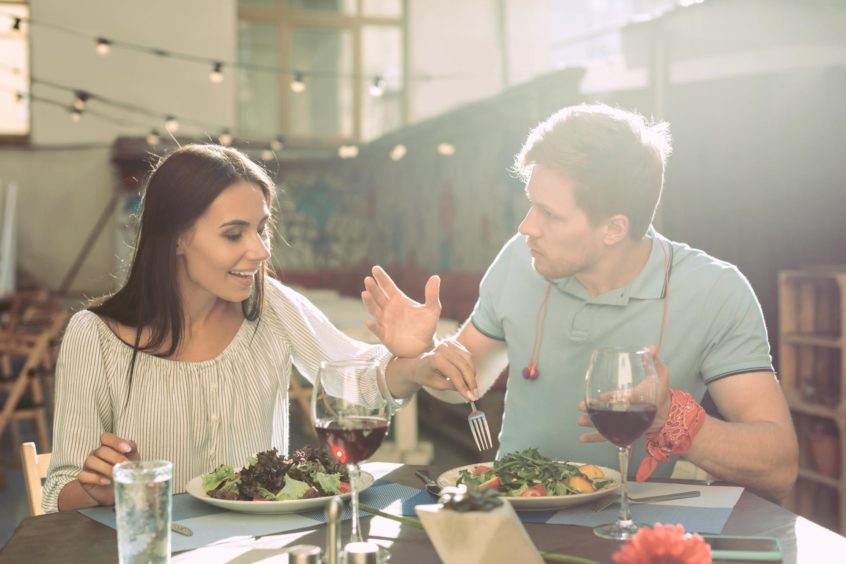After recent research revealed diners’ pet hates when it comes to others trying to sample food from their plates, Brian Stormont takes a look at the new rules of modern dining in this new hygiene-focused world.
In recent years we have become much more relaxed as a nation when it comes to dining, with elbows on the table, for instance, no longer the enormous “no no” it used to be.
However, with the outbreak of coronavirus seeing people become more aware of hygiene and conscious of the space around them, behaviours around sharing food seem to be shifting.
According to Food Standards Scotland, there is no evidence to suggest that transmission of Covid-19 can occur through the foodborne route, but, it seems, despite that, people are even less likely to be sharing.
Recent research suggests that, as a nation, we hate sharing food, with a resounding 67% agreeing that if you want something, you should order it yourself.
A survey of 2,000 British adults, revealed that taking a bite of someone’s burger is the worst food crime, with 52% of the nation and Joey from Friends agreeing nothing is ruder.
Nicking a chip from a fellow diner’s plate came in close second place (50%), and deciding you’ve no room for pudding, then digging into your companion’s dessert came third (49%).
Taking a handful of crisps from someone’s packet, when politely offered one or two (49%), helping yourself to a friends’ naan bread when you didn’t order any (41%) and having a try of someone else’s food when they’ve nipped to the loo (47%) also made the list of things which make us see red at the dinner table.
Grin and bear it
However, the poll by pie brand Pukka, found a polite one in five (19%) will grin and bear it when someone helps themselves to avoid arguments.
And one in 20 Britons (4%) confess they are inclined to commit food crimes themselves, so do not have a leg to stand on when friends and family take a bite of their food.
Commissioned by pie maker Pukka, the study found that an exception to the rule is date night, as over half (52%) of Brits are happy to share their food with their beloved – in fact 31 % admit they really enjoy it.
The data found that half of the nation admits to regularly experiencing “food share fear”, but it isn’t only that which proves problematic.
A survey commissioned by software partner to the hospitality industry, Fourth, revealed how technology has crept into the modern-day dos and don’ts of dining, with texting on your phone, taking pictures of each dish, holding your knife like a pencil and speaking with your mouthful named as restaurant “no-nos”.
Some 60% of of people have been left disgusted by their fellow diners’ etiquette when enjoying a meal, such as clicking their fingers to get the waiter or waitress’s attention.
The poll of 1,500 adults also discovered one in 10 were embarrassed by their own partner’s behaviour while eating out, while 11% had to apologise for their ill-mannered parents.
One in 20 diners was found to have complained that their red wine was warm, while 5% believed a finger bowl was “fancy clear soup”!
And 7% said they were embarrassed if friends begin a sing-song with fellow diners, while a third of us have had to put up with an extremely drunk person in the party.
Simple rules to stay safe
Although the risk of contracting coronavirus through food consumption is thought to be low, according to Food Standards Scotland we should all follow some simple hygiene rules as a matter of course.
Risk from contaminated food: Coronavirus spreading through food is highly unlikely. However, it is advised that all normal good hygiene practices should be followed when preparing food, for instance ensuring that you wash your hands regularly, that your work surfaces are clean and you avoid cross-contamination between cooked and raw foodstuffs.
Risk from infected food handlers: The main source of transmission of Covid-19 is through contact with another person so it is highly unlikely that the virus could be contracted through food prepared elsewhere. People working in the food industry are advised to ensure that they follow normal hygiene practices and ensure their preparation surfaces and food packaging are in a clean environment to prevent transmission of the disease through their products.
Risk from contaminated food contact materials: Evidence suggests that the risk from food contact materials is very low. Good hygienic practices should already be in place during the manufacturing stages to significantly reduce the risk of contaminating any food contact materials and articles.
Advice on infection control when handling food: It is important to follow good hygiene practice at all times when handling food, taking the following precautions to prevent the spread of infection – wash hands thoroughly throughout the preparation of food, in particular after coughing or sneezing, after going to the toilet, before eating and drinking.
Hand sanitiser gels can be used in addition to hand washing, but should never be used as a substitute to hand washing.
If possible, try to minimise direct hand contact with food by using tongs and utensils. Gloves can be used to minimise direct contact with food but they, too, can become contaminated with bacteria in the same way as hands so are not a substitute for good personal hygiene and hand washing.











